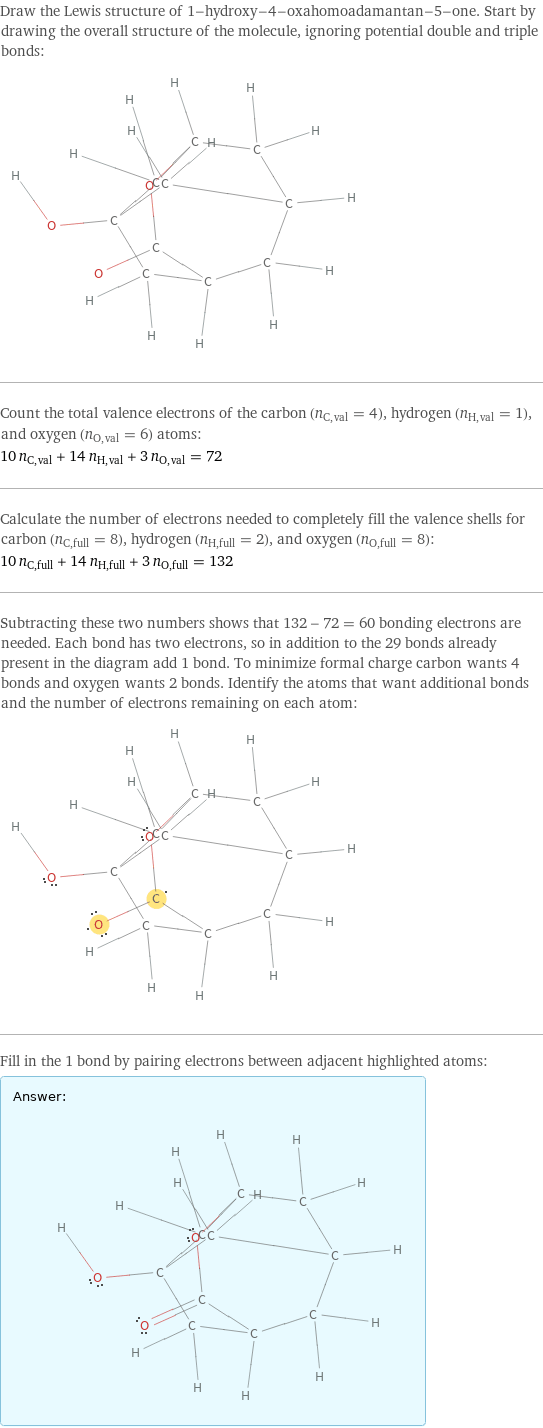Input interpretation

1-hydroxy-4-oxahomoadamantan-5-one
Chemical names and formulas
![formula | C_10H_14O_3 name | 1-hydroxy-4-oxahomoadamantan-5-one alternate names | 4-oxatricyclo-[4.3.13, 8]undecan-1-ol-5-one mass fractions | C (carbon) 65.9% | H (hydrogen) 7.74% | O (oxygen) 26.3%](../image_source/656f5cfaa093b0969852f67f49394010.png)
formula | C_10H_14O_3 name | 1-hydroxy-4-oxahomoadamantan-5-one alternate names | 4-oxatricyclo-[4.3.13, 8]undecan-1-ol-5-one mass fractions | C (carbon) 65.9% | H (hydrogen) 7.74% | O (oxygen) 26.3%
Lewis structure

Draw the Lewis structure of 1-hydroxy-4-oxahomoadamantan-5-one. Start by drawing the overall structure of the molecule, ignoring potential double and triple bonds: Count the total valence electrons of the carbon (n_C, val = 4), hydrogen (n_H, val = 1), and oxygen (n_O, val = 6) atoms: 10 n_C, val + 14 n_H, val + 3 n_O, val = 72 Calculate the number of electrons needed to completely fill the valence shells for carbon (n_C, full = 8), hydrogen (n_H, full = 2), and oxygen (n_O, full = 8): 10 n_C, full + 14 n_H, full + 3 n_O, full = 132 Subtracting these two numbers shows that 132 - 72 = 60 bonding electrons are needed. Each bond has two electrons, so in addition to the 29 bonds already present in the diagram add 1 bond. To minimize formal charge carbon wants 4 bonds and oxygen wants 2 bonds. Identify the atoms that want additional bonds and the number of electrons remaining on each atom: Fill in the 1 bond by pairing electrons between adjacent highlighted atoms: Answer: | |
Basic properties

molar mass | 182.22 g/mol
Units

Chemical identifiers

PubChem CID number | 3239817 SMILES identifier | C1(C3(C(=O)OC2(CC(CC1C2)(O)C3)))